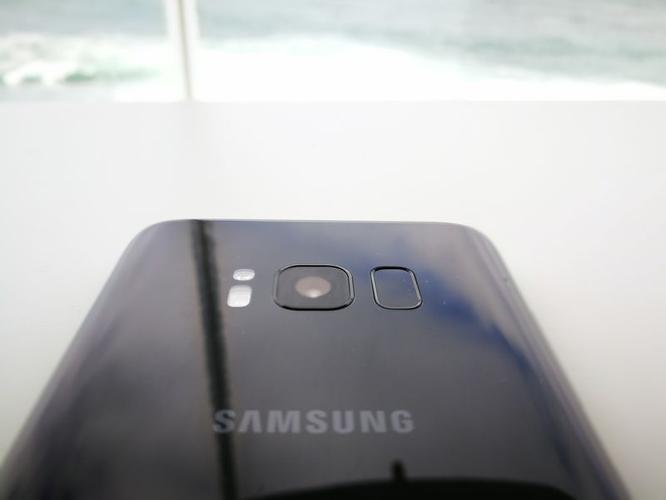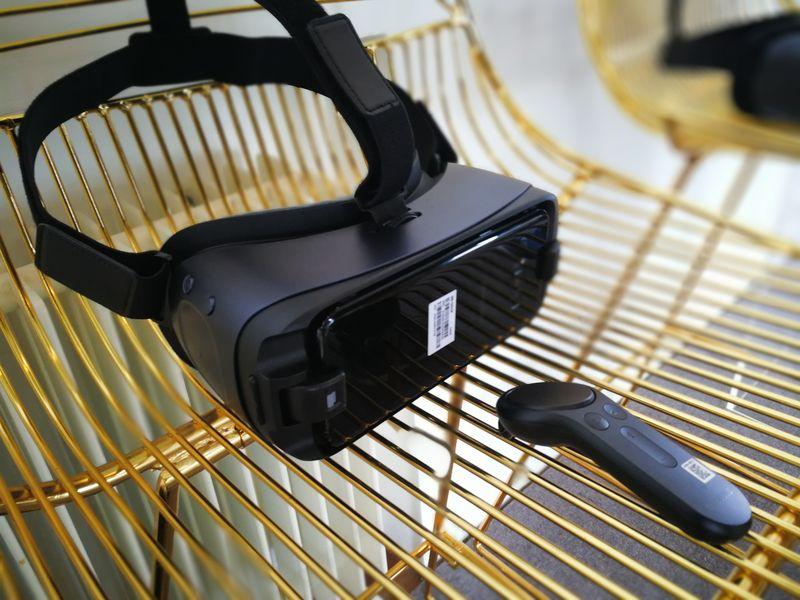
The new Samsung Galaxy S8 is better than an iPhone 7 in many ways.
Samsung Galaxy S8 camera review
We were expecting very great things from the S8’s main, 12-megapixel camera. Its predecessor had one of the very best fast-focusing, low-light cameras on the market.
We were not disappointed. Frankly, it’s brilliant.
Focusing is effectively instantaneous, usually accurate and there’s rarely any shutter lag. It’s best in class for all of these facets along with the Google Pixel – maybe even better.

There’s even a Selective Focus mode which fakes a Bokeh effect. While getting this working proved very inconsistent (at least if it didn’t work it just took a normal picture) it did make for some impressive shots.

This effect could still go wrong thanks to some messy transitions from blurred-to-sharp though. It was never going to beat Huawei’s dual-lens Leica phones for this effect but it’s still nice to have the potential for something similar.
Colours are vibrant, low-light performance is amazing and gimmicky Snapchat-Pupper-like features are massive hit with the kids.





We also struggled to fault movies too. With 4K recording, image stabilisation was impressive as was audio capture. Focusing was generally smooth and fast although moving from close-up to wide-angle occasionally needed a screen-tap nudge.

Dynamic range was impressive with detail in bright areas being captured when most of the scene was only modestly lit. While some grain did appear when in dark areas, it still offered the best-in-class low light performance of any phone's camera that we’ve seen. That all said, we actually preferred shooting at 60fps in Full HD. The smooth-tracking high-resolution quality was even more comfortable to watch.
Battery Life
The S8 has a 3,000mAh battery. That’s about average for a phone this size and we’d like to have seen a bit more. Under heavy usage – browsing, navigating and taking pictures – it consistently got to the late evening before making low-power noises. That’s not great but it's better than its big Android rival, the Google Pixel XL which struggles to make it past late afternoon under similar workloads. We also noticed that taking many pictures tended to hit battery life significantly - not surprising considering all the processing that goes into them.
However, Samsung offers some seriously good power-saving modes which can almost eke days out of a battery that otherwise looks like it’s about to die. So altogether not bad, but the (lower-powered) LG G6 was still a bit better in this area.

Other features
The S8 is IP68 certified meaning that it’s dust proof and waterproof to 1.5m for 30 minutes. As usual there are caveats about being in fresh water or salt water and whether or not that water is moving. Samsung’s fine-print on this matter appears in this document.
One of the big features is DeX which is a ($199) docking cradle that allows you to use your phone with a monitor, keyboard and mouse. The device essentially lets the phone be used like a Chromebook. While some Microsoft and Adobe applications have been optimised for the screen, keyboard and mouse, others will just appear in non-resizeable windows on screen. We’ll be interested to see if this takes off, but we haven’t seen a killer application yet.
Elsewhere Samsung is also launching a new Gear VR headset. The new one comes with a Google Daydream-like controller. At $199 it's quite pricey but it should have some exclusive Samsung (and their partners, Oculus) content to go with it.

Conclusion
The Samsung Galaxy S8 costs $1,199 and the slightly-larger S8+ will cost $1,349. People ordering before April 27 (from a Samsung Electronics store) will get one of the new Samsung Gear VR headsets (and a $50 Oculus voucher) for free.
The S8 is the last flagship phone that we’ve tested in this product cycle. We’ve been hugely impressed by other flagships but all of them had a flaw. The Huawei Mate 9 was brilliant but its ‘wonder camera’ is poor in low light. The Oppo R9s Plus is a great-value all-rounder but not the most powerful phone. The Google Pixel XL is a brilliant phone but has poor battery life and is very expensive. The HTC U Ultra is arguably the prettiest phone ever, but it’s under-featured and oversized. The iPhones are iPhones but they don't have headphone jacks and their cameras aren't as good.
That leaves the LG G6 as the best all-round phone we’d seen up until now. It isn’t particularly pretty but it does everything well and is a similar size and shape to the S8 and costs almost $200 less.
But we’re sticking with the S8. The phone’s failings are negligible at the end of the day. The screen and handling are generally excellent. Battery life is adequate. It’s super-fast and its camera is one of the very best on show. In short, it’s got it where it counts and at $1,199 it’s expensive but reasonable value in the current market.
The S7 only became our 2016 Phone of the Year after a big price drop but we don’t expect the S8 to drop in price as quickly as the S7 did due to its ‘premium’ design. However, we do expect the LG G6 to drop in price quickly (as its predecessors regularly have). If it does then then the G6 will beat beat this for value. For now though, if you’re going to buy a new phone, this is the best on the market.
Join the CIO Australia group on LinkedIn. The group is open to CIOs, IT Directors, COOs, CTOs and senior IT managers.
